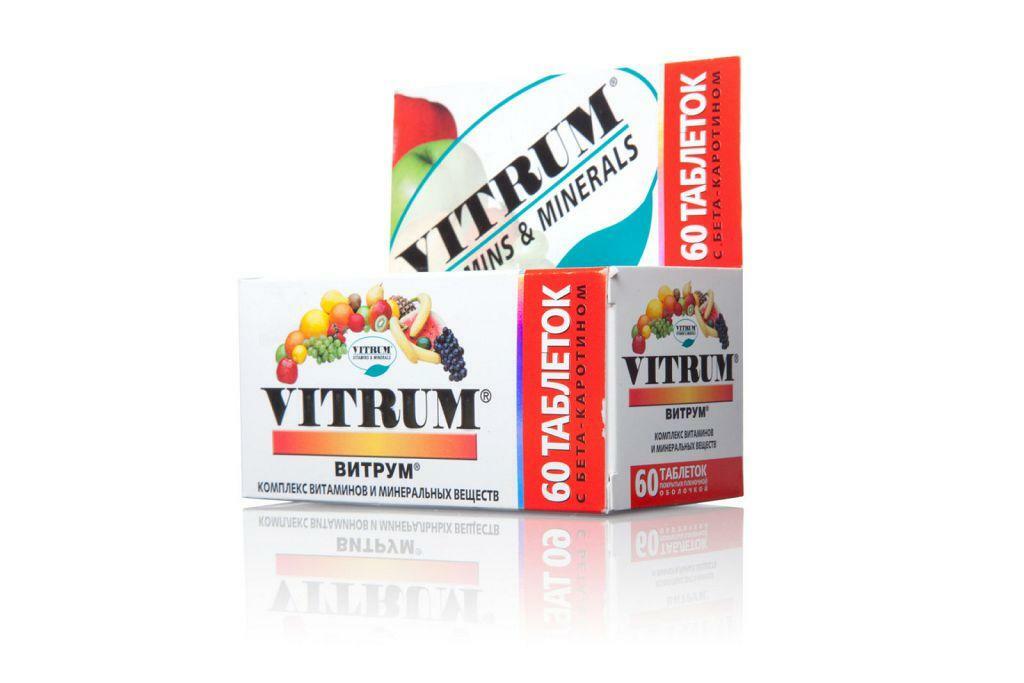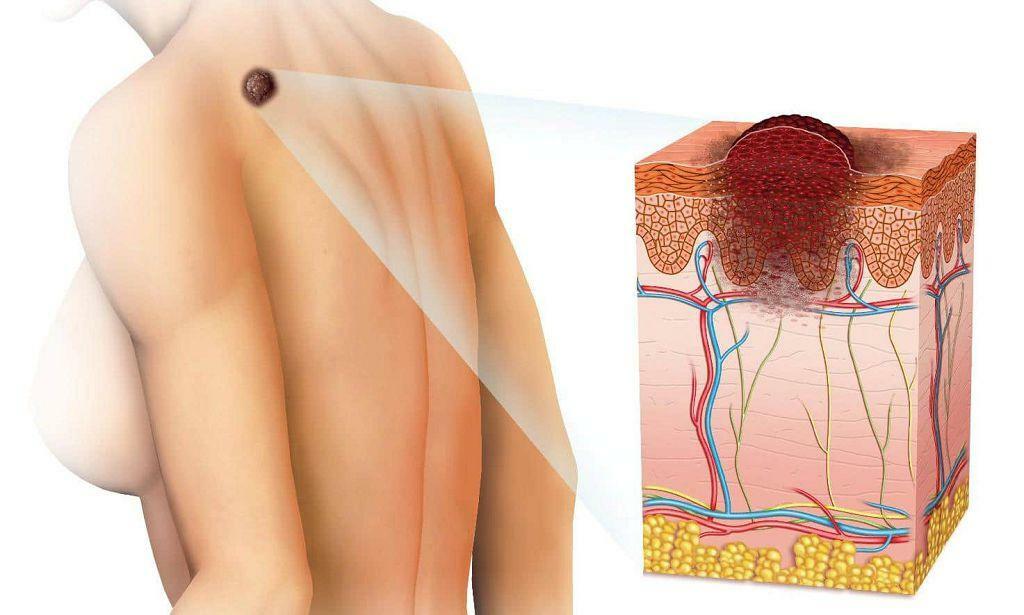Nails - horny plates, located on the back surface of the fingers of a person. They are one of the most susceptible to various diseases and injuries areas, along with skin and mucous membranes, as they constantly contact with the aggressive external environment. Pathological processes can cause damage to the integrity of the nail and the emergence of all sorts of complications. To avoid the development of pathologies, it is necessary to pay attention to anxious symptoms in a timely manner and begin treatment.

Diseases fingernails and treatment
material Content
- 1 Onychomycosis
- 2 Psoriasis
- 3 Onihoshizis
- 3.1 Video - Diagnosis of nails
- 4 Whitlow
- 5 affected nails as a symptom
- 5.1 Video - What your nails say about you
Onychomycosis
onychomycosis - a fungaldefeat of the nail plate. The disease can spread as one nail, or several. In severe cases, the epidermis, epithelial membranes and hair also suffer. Most pathology develops due to the multiplication in the patient's body of fungi-dermatophytes, which feed on keratin.

Normotrophic onychomycosis
Attention! In most cases, onychomycosis affects initially the nail plates on the legs, and why does the patient himself transfer the infection to his hands.
Infection occurs most often when a patient visits a community site, where the most favorable conditions for reproduction and transmission of the pathogen are created. For a long time, the fungus can be stored in warm and humid rooms. Especial epidemic danger is represented by cork and wooden surfaces, since they have a porous surface. In these micro-holes a fungus can exist for several years in a state of spores.
Attention! There is also autoimmune onychomycosis. With this pathology, pathogens in the human body, due to a strong weakening of the immune system, begin to actively multiply and damage the nail plates.

Types of onychomycosis
The disease is manifested by the following symptoms:
- feeling of itching and burning of the skin around the nail;
- deformation of the nail plate, the appearance of impressions, "waves" and creases;
- discoloration of the nail, the appearance of gray, whitish or yellowish spots on the nail;
- lamination and brittleness of the nail plate;
- peeling of the skin around the nail, the appearance of dry plaques and cracks;
- formation of wet papules in interdigital spaces.

Onychomycosis
Therapy of onychomycosis includes the following measures:
- Treatment of the nail and nail bed with antiseptic agents. It is recommended to select drugs with fungicidal, that is, antifungal, action. The most commonly used solution is Fukortzin or Castellani .Wipe the affected area twice a day.
- For exfoliation of the nail affected by the fungus, keratolytic patches are used: Mikospor , Junlei , etc.
- Application on the nail plate of special lacquer coatings for the destruction of the pathogen: Irunin , Loceril .
- Apply ointments and gels with fungicidal action. Most drugs also have an analgesic, cooling and antipruritic effect. The most popular are Acyclovir, Mikomaks, Terbisil , etc.
Psoriasis
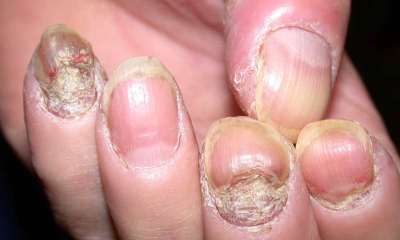
Psoriasis of nails and fingers
Psoriasis is a chronic disease of non-infectious genesis, which in most cases affects the epidermis. This pathology is included in the group of lichens, but has an autoimmune nature and is not transmitted from person to person. Psoriatic lesions of the nails are rare. In most cases, it manifests as a syndrome in psoriasis of the epidermis or joints.
Warning! In rare cases, nail psoriasis develops as an independent disease. In this case, it can be difficult to differentiate it from onychomycosis.

Nail damage in psoriasis
Symptomatic manifestations of pathology directly depend on the form of psoriasis. Most often, the following manifestations of are noted in patients:
- Itching and burning of the epidermis around the nail, peeling and appearance of scales and cracks.
- Appearance of inflamed hyperemic border along the perimeter of the affected nail bed.
- Changing the structure and color of the nail. The nail plate quickly collapses, becomes grayish or yellow-brown in color. When pressed hard, the nail bends or crumbles.
- On the surface of the nail plate furrows, hollows and friable areas of dull yellow color are formed.
- Because of the thinning of the nail, capillaries and petechiae can pass through it-small subcutaneous hemorrhages.
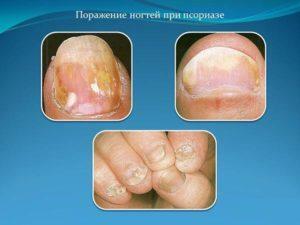 Nails with psoriasis
Nails with psoriasis 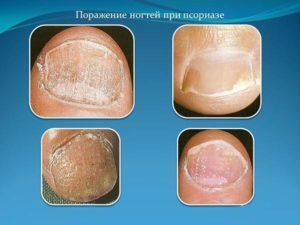 Nail plate lesion in psoriasis
Nail plate lesion in psoriasis Treatment of of nail psoriasis is usually based on the use of topical agents:
- Creams that contain steroids. Gornonosoderzhashchie drugs are directed directly at the elimination of pathological autoimmune process. In most cases, specialists prescribe Triamcinolone or Prednisolone .
- Drugs with vitamin D3.They are necessary for strengthening the nail plate and arresting the formation of psoriatic plaques. For the treatment of psoriasis apply Taclonex, Tacalcinol and Daivonex .Medications with dermatotropic effect. They are aimed at reducing the formation of pathological cells and, as a consequence, reducing the clinical symptoms of the disease or the formation of remission. For psoriatic lesions of the nails, DITRANOL, DIMEXIDE, ANTRALIN is used.
- Solution of salicylic acid .It is necessary daily to wipe the affected area with this remedy to remove the keratinized particles and plaque formed on the nail surface.
Attention! Means containing corticosteroids, it is recommended to use no more than 5-7 consecutive days. The dosage regimen can only be prescribed by a doctor.
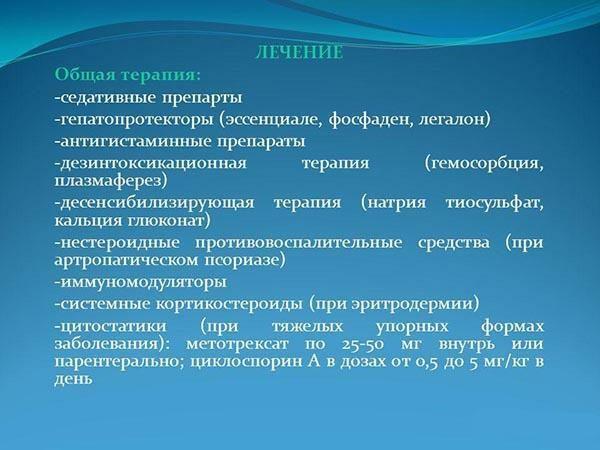
Treatment of psoriasis
Physiotherapy is also used as part of complex therapy: magnetic wave procedures, phonophoresis, ultraviolet treatment and local action baths .
Warning! Psoriasis is an autoimmune disease. To prevent a relapse of the pathology, it is necessary to maintain the normal functioning of the immune system.
Onychosisis
Onychoschisis is a disorder in which the nail plate is destroyed due to destructive-dystrophic processes. Pathology can develop as an independent process, caused by exogenous or endogenous factors, and as a syndrome in various diseases, for example, with fungal nail damage.
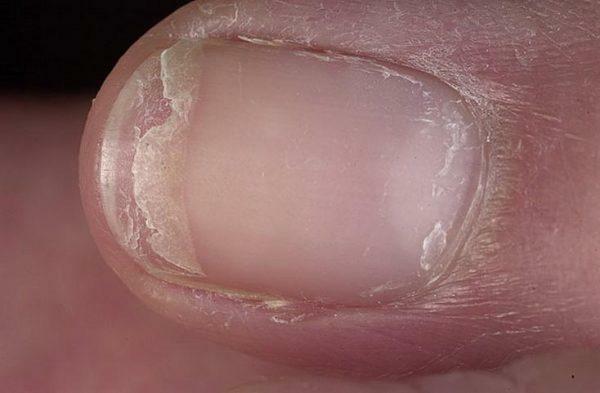
Photo of onychosysis
Externally, the disorder is manifested by fragility and fragility of the nail plate. In clinical examination, a specialist often notes a change in the color and texture of the nail. Onychoschisis can develop in connection with the following provoking factors:
- mechanical nail damage;
- use of low-quality varnishes and tools for their removal;
- deficiency of vitamins and minerals in the patient's body;
- autoimmune pathological reactions, including allergies;
- direct contact with aggressive substances, household chemicals;
- thermal burn.
For the rapid restoration of the nail plate, the patient is shown the use of vitamins of group A .In most cases, take the drug for at least 4-6 months. Also, the patient is prescribed a course of intramuscular injections of vitamins B6-B12 .
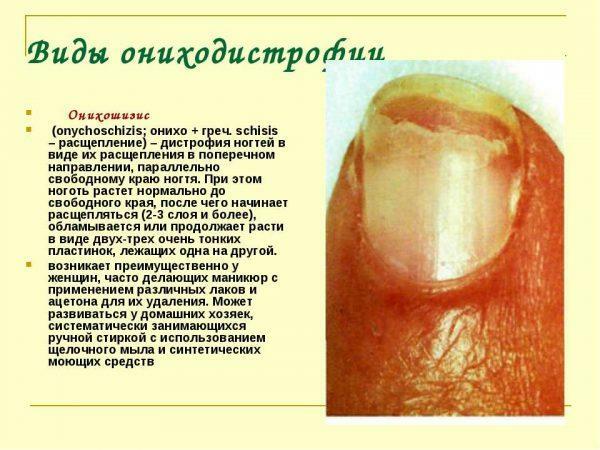
Onychosisis
For local treatment directly on the damaged nail, various oils are used: sea-buckthorn, olive, anise , etc. Also every 3-4 days it is recommended to make hand baths with gelatin and masks made of natural wax.
If the pathological process completely injures the nail and the skin around it, then the patient needs to apply antiseptic dressings to the affected area of .Directly on the nail should put a sterile gauze, impregnated with a weak solution of potassium permanganate or hydrogen peroxide. On top, the compress is secured with a clean bandage. This dressing will avoid getting the infection on the wound surface and prevent the development of complications.
With onychosis, physiotherapy is also performed. It includes phonophoresis procedures and a bath with the addition of essential oils.
Attention! Onychosis often develops as a result of a deficiency in the body of diseased nutrients and elements. For the prevention of this disease, it is recommended to take a course of vitamins A and E every 6-12 months.
Video - Diagnosis by nails
Panaritium
Panaritium is an acute inflammatory process, which usually creates suppuration in the base of the nail. In most cases, pathology occurs against the background of a local infectious process. Panaritium can form on the palmar surface of the hand, but much more often affects the nail and skin area around it. This is due to the abundance of small wounds, cracks and burrs. Through such damage to the epidermis, the infection easily enters the body and causes acute inflammation. Pathology rarely occurs in an erased form. In the prigootsevoy area of the finger is a huge number of nerve endings, because of which the panaritium delivers the patient intense pain.

Panaritium on the arm
In a typical course, the disease manifests itself with the following symptoms:
- intense, throbbing pain in the affected area;
- suppuration, the formation of a strip of pus at the base of the nail;
- pronounced hyperemia, skin tension of the peri-osedal cushion;
- local hyperthermia of the affected area, burning sensation;
- in the spread of infection - a throbbing pain in the hand, acute deterioration of well-being, fever.
Attention! Panaritium is a dangerous disease. Specificity of finger anatomy contributes to the rapid development of the infectious process and the destruction of deep tissues, including bones and joints. This is why when a pathology occurs, you should immediately contact a surgeon.

Description Panaritium
Panaritium is treated with operative intervention. If necessary, the doctor performs anesthesia of the affected area, although in most cases the skin near the abscess loses sensitivity. After the panaritium they are opened and carefully drained. If necessary, after the operation, the patient is prescribed antibacterial preparations of both local and general action. The most widely used erythromycin and tetracycline ointment .
If panaritium is immature, physiotherapy procedures are indicated to stimulate the formation of the abscess: ultraviolet treatment, thermal exposure and darsonvalization of the affected area of .

Removing the Panic
Removal operation The panaritium is performed on an outpatient basis and lasts about 10-15 minutes. After the procedure, a sterile bandage with antibacterial agent is applied to the affected area.
Nail damage as a symptom of
In some cases, a violation of the integrity of the nail plate indicates the development in the body of more extensive and severe pathological processes. In this case, the destruction or deformation of the nail is only a sign of the underlying disease, which requires an urgent appeal to a specialist.

What can the changes on the nails say
| Appearance of the nail plate | Image | Pathology |
|---|---|---|
| White or yellowish-gray nail shade |  | Liver and gall bladder pathologies |
| Cyanotic nail shade and skin around | 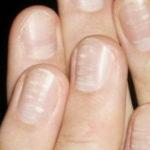 | Cardiovascular system disorders, heart failure |
| Pale, transparent, thin and sharp nails | 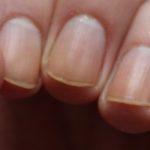 | Anemia |
| Black or dark brown streaks and furrows on the surface of the nail and around it | 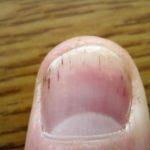 | Melanoma |
| Yellow stratifiedgti with a cyanotic rim at the base |  | Diabetes |
| White spots or alternation of white and pink bands on the surface of the nail and skin of the distal phalanges |  | Pathologies of the urinary system, functional disorders of the kidneys |
Nail diseases on the hands are one of the most common dermatological pathologies. Diseases that cause deformation of the nail plates and epidermis around it, not only significantly impair the quality of life of the patient, but can lead to the development of more serious disorders. That is why, if any pathological manifestations are found, it is necessary to start treatment on time.

